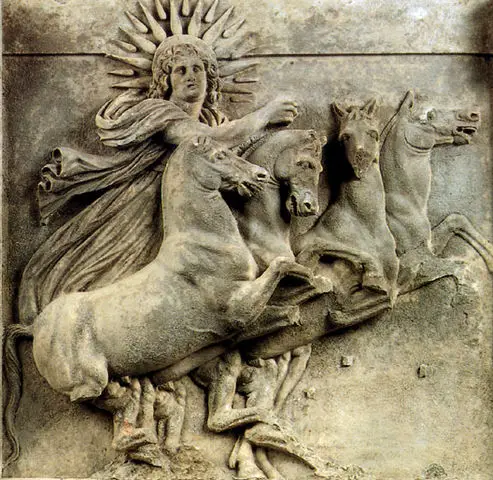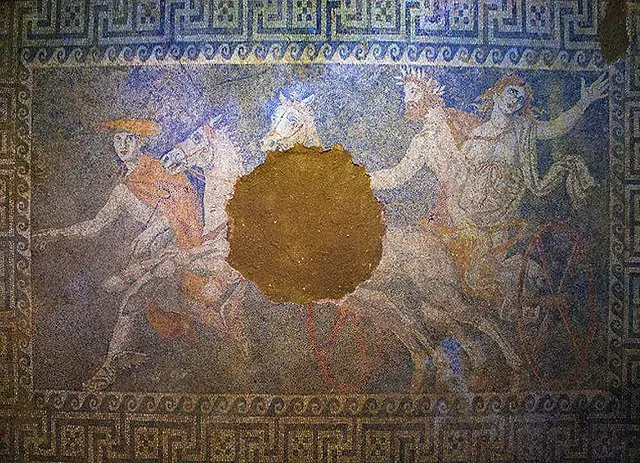| Further Reading | The Top 5 Fun Facts About Medieval Knights |
Many images today depict the medieval kings and queens of Europe wearing their crowns upon their head at all times. This however is a modern image of how often the royalty would wear the ceremonial crown. In reality the amount of time a monarch of medieval Europe would wear a crown differed depending on the monarch, time period, or state of the kingdom.
Most medieval kings and queens would only wear their ceremonial formal crowns while their court was in session. If the kingdom was large this could mean the monarch would hold court significantly more than a smaller kingdom. In this case the monarch would be wearing their formal crown often. However, this was the exception and most monarchs seldom wore it.
Here at The History Ace I strive to publish the best history articles on the internet. If at the end you enjoyed this article consider subscribing to the free newsletter and sharing around.
Without further ado, here is the article going over the question of did kings and queens wear their crowns all the time.
When A King Or Queen Did Wear Their Crown
Normally a king or queen would only wear their crown during formal ceremonies where the entire court was in attendance.
While at court the royal crown served two purposes. First, the crown was made to distinguish the king or queen from the rest of the court. This was often done through elaborate designs or bright colors.
The second purpose a royal crown served was to connect the king or queen to their kingdom. In ancient Egypt the queen Nefertiti wore a blue crown to signal royalty and the stars. This connected her to both the Egyptian religion and the people she governed.
An example of a modern crown being used to distinguish the monarch while also connecting them with their kingdom can be seen in Queen Elizibeth II’s imperial crown of Britain.
The Imperial Crown of Britain has over 2,000 diamonds, 17 sapphires, 269 pearls, and 11 emeralds. Below this metal hat sits a purple velvet cap which disperses the weight.
However, this was not a normal hat for the monarch. Most crowns are incredibly heavy. The British crown weighs a massive 3 lbs. making it one of the heaviest hats. This would make it near impossible to wear on a daily basis.
As such kings and queens would wear their crowns only during formal gatherings of the court where they needed to display their power and act as a representative of their kingdom.
When Kings or Queens Did Not Wear Their Crowns
In general, anytime the king or queen was not in the royal court they did not wear their crowns.
The most popular pastime of kings and queens was hunting. It would be nearly impossible to wear a heavy crown while hunting from either horseback or on foot.
Further, the crowns were often extremely valuable. Both as a material object but more important as a symbol of a kingdom. Having a king or queen wear the royal crown outside of the royal court would increase the likelihood of theft.
Generally a king or queen would rather wear brightly colored clothes that were clean to demonstrate their importance within medieval society. Unless they lorded over a large kingdom most people would know who they were.
There are some examples of kings and queens wearing royal crowns outside of the royal court. This was primarily in two scenarios.
The Tournament
The first was during a royal tournament during the late medieval era. Kings and Queens would watch from royal booths while wearing their royal crowns. This was often a symbolic gesture designed to demonstrate authority over either a champion or the tournament itself.
This was rarer however as the weight of the crown would make watching tournaments rather cumbersome. There are reports of kings and queens having fake crowns made for comfort although these only come from some old medieval manuscripts surrounding tournaments in England during the 17th century.
While In Battle
Kings and Queens rarely engaged in direct battle or conflict during their military campaigns. It was unnecessary to wear a crown while back in the safety of the camp or at the rear of the army.
One of the main reasons why Kings or Queens didn’t wear a crown while leading an army was because of safety reasons. The enemy army would attempt to break into a royal camp to abduct the monarch if possible. This happened to King Conrad of Tyre in 1192.
However, for some reason English monarch’s loved to have armor built of them for the field that contained a crown on top of their helmet. King Edward III had a special suit of armor constructed for him that held a crown on top of his metal helmet to signify his status among the generals.
Today this image of the English King Edward III wearing a royal crown everywhere is one of the main reasons Hollywood has depicted kings and queens as always wearing a royal crown.
Just to be clear, outside the royal court it was highly uncommon to see a king or queen wearing their royal crown.
Conclusion
There you have it, an entire article dedicated to the question of whether or not kings and queens wore their crowns all the time.
Besides the royal court it would be rare to see a king or queen wearing their crown. They did not wear them all the time because the crown was heavy and a target for thieves. Further, it marked them as a target. Outside of some uncommon examples most kings and queens did not wear a crown all the time.
Here at The History Ace I strive to publish the best history articles on the internet. If you enjoyed this article then consider subscribing to the free newsletter and sharing around the internet.
Further, you can check out some of the other articles below.
-
How The American Revolution Changed The World

Here is how the American Revolution changed the world. Many people are not aware of just how important this event actually was.
-
Why The Roman People Loved Chariot Racing

Why did the Roman people love chariot racing? Well it all comes down to these 3 reasons.
-
The Design and Color of Roman Chariots

What was the design and color of Roman Chariots? Were they faster or slower then normal chariots? Well here is everything!
Sincerely,
Nick